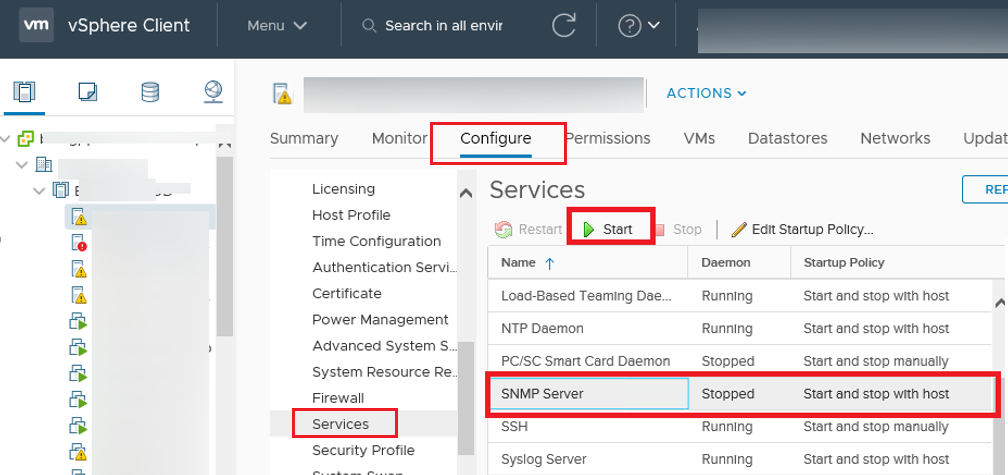

#Vsphere client 5.5 windows 7 software#
VMware’s expansion into Software Defined Storage (SDS) is the new Virtual Storage Area Network (VSAN) available with vSphere 5.5. I’ll throw in a couple of vCloud features as well because they really are that exciting: #1 VSAN available in vSphere 5.5 for auto provisioning of local storage Let’s jump right into the most important features of vSphere 5.5. In other words, vSphere 5.5 is a significant feature release, and not a a run-of-the-mill release. Unlike other software vendors, when VMware releases a new point release like 5.1 and 5.5, there are major new features packed inside and not just a bunch of patches boiled into a ‘service pack’ release. Top 10 Most Important Features in vSphere 5.5 Happy Virtualizing! 🙂 Posted by Stephen Wagner at 2:11 PMĨ Responses to “VMWare vSphere 5.Every VMware admin will want to read what follows - the top 10 features in the brand-new vSphere 5.5. I’m actually noticing it’s running WAY faster, and isn’t as glitchy as it was before. After this, all was good, and everything looked great inside of the vSphere Web Client. This will also restart the Management Web services.īAM, it’s fixed! I went ahead and restarted the entire server that the vCenter server was running on. Change to your FQDN for your vCenter server.ĩ) Restart the “VMware VirtualCenter Server” service. In an elevated Command Prompt (that we opened above), changed the working path to: “Program Files\VMware\Infrastructure\VirtualCenter Server\isregtool”.Ĩ) Run “register-is.bat ”. We’ve already won half the battle.ħ) We now need to register the vCenter Server with the newly reset Inventory Service. At this point, if you try to log on to the vSphere Web Client, it will error with: “Client is not authenticated to VMware Inventory Service”.

Change the to your FQDN for your vCenter server, and change the SSO_PASSWORD to your Single Signon Admin password.Ħ) Start the “VMWare vCenter Inventory Service”. Change your working directory to “Program Files\VMware\Infrastructure\Inventory Service\scripts”.Ĥ) Run “createDB.bat”, this will reset and create a Inventory Service database.ĥ) Run “is-change-sso.bat “ ” “SSO_PASSWORD”. If you are running in to this issue, PLEASE take a snapshot of your vCenter Server before attempting to fix it, so that you can roll back if you screw anything up (which I had to do multiple times, lol).ġ) Stop the “VMWare vCenter Inventory Service”.Ģ) Delete the “data” folder inside of “Program Files\VMware\Infrastructure\Inventory Service”.ģ) Open a Command Prompt with elevated privileges. Keep in mind that ALL information in the vSphere client was correct and accurate, it was only the vSphere Web client that was having issues.Īnyways, I tried a bunch of things to fix it, and spent hours working on the problem. This freaked me out, it was a true “Uhh Ohh” moment. Disconnecting and (re) connecting hosts have no effect on issue.

Viewing VMs in vSphere client, reporting they are being stored on a different datastore then they actually are. Virtual Machines were being reported as off (turned off) even though they were running. Errors about missing datastores on log on to the vSphere Web Client. Also, it was reporting that some Virtual Machines were off, when in fact they were on and running. Some Virtual Machines were being reported as sitting on different datastores (they were at one point weeks ago, however since were moved). Also, after clicking OK, I noticed that lots of information being presented inside of the vSphere web client was inaccurate. To my surprise, when logging in, immediately I received an error: “ ManagedObjectReference: type = Datastore, value = datastore-XXXX, serverGuid = XXXXXXXX-XXXX-XXXX-XXXX-XXXXXXXXXX refers to a managed object that no longer exists or has never existed“. Earlier today I was doing some work in my demonstration vSphere environment, when I had to modify some settings of one of my VMs that are setup as the latest version (which means you can only edit the settings inside of the vSphere Web Client).


 0 kommentar(er)
0 kommentar(er)
